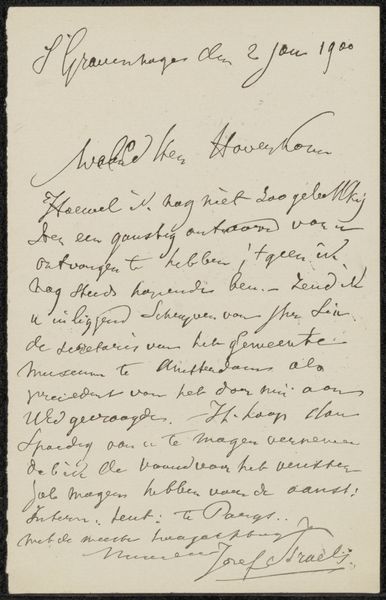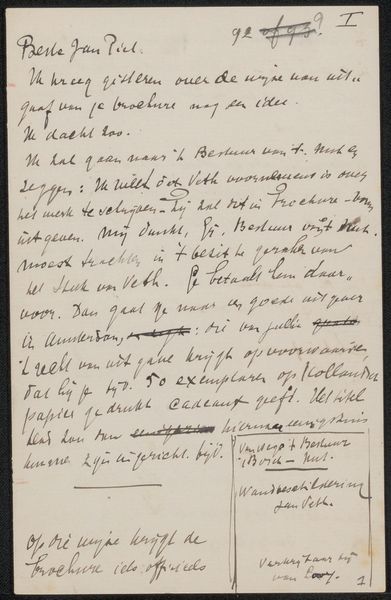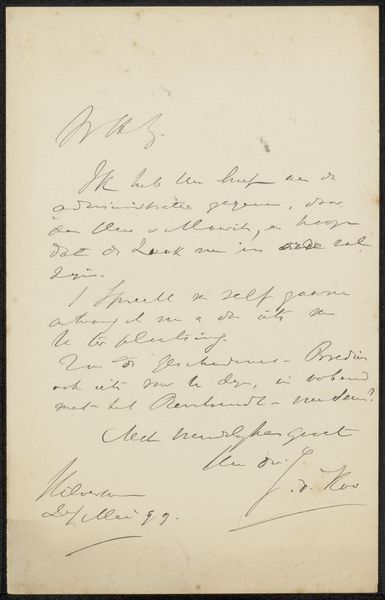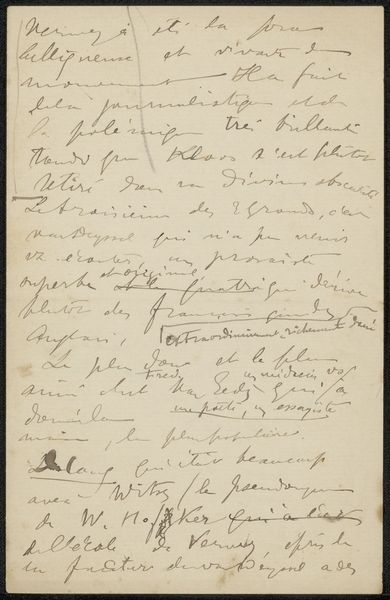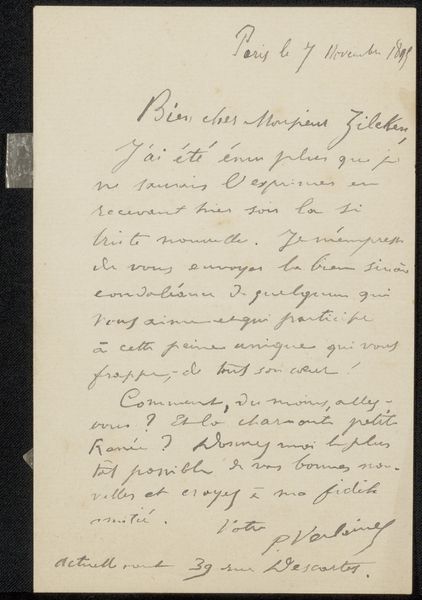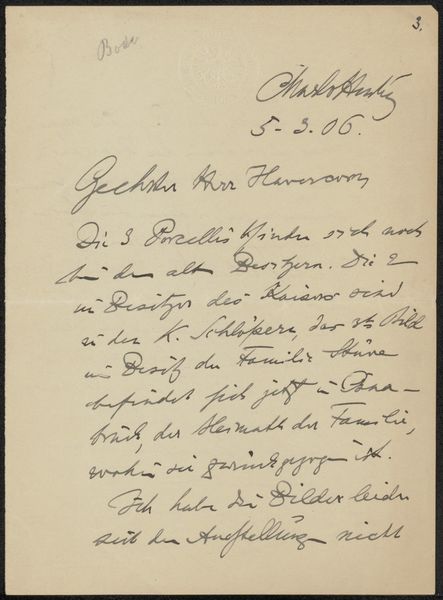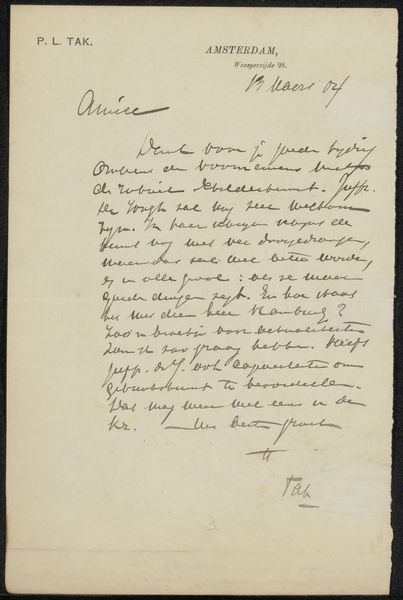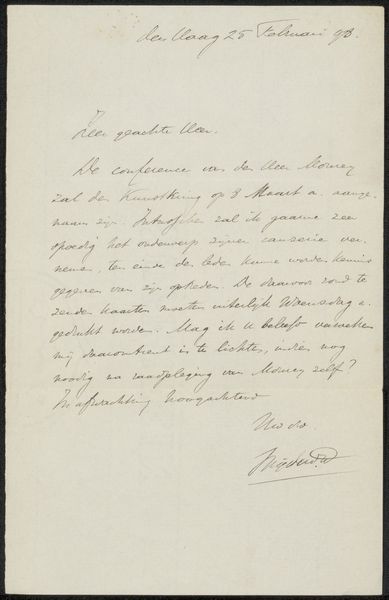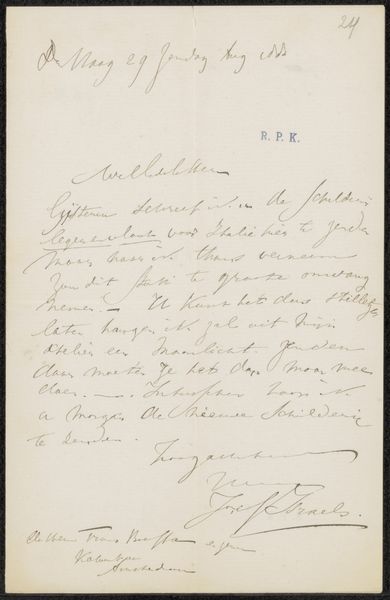
drawing, paper, ink, pen
#
portrait
#
drawing
#
pen sketch
#
old engraving style
#
hand drawn type
#
paper
#
personal sketchbook
#
ink
#
hand-drawn typeface
#
ink drawing experimentation
#
intimism
#
pen-ink sketch
#
pen work
#
sketchbook drawing
#
pen
#
sketchbook art
Copyright: Rijks Museum: Open Domain
Editor: Here we have Jozef Israëls’ “Brief aan Pieter Haverkorn van Rijsewijk,” likely from 1896, made with pen and ink on paper. It's a handwritten letter, and there’s something quite personal about seeing the artist’s own handwriting. What stands out to you in this piece? Curator: Well, beyond the intimacy you observe, I'm drawn to consider what this letter communicates about the power dynamics inherent in artistic patronage at the time. The tone of the letter seems quite formal, yet vulnerable. Considering Israëls’ background, his Jewish heritage, and his focus on portraying working-class life, do you think his identity may have shaped his relationship with more privileged patrons like Haverkorn? Editor: That's a really interesting point. It hadn’t occurred to me to consider it through that lens. Could the very act of writing, this careful crafting of a message, be seen as a negotiation for respect or acknowledgment, given the social hierarchy? Curator: Exactly. The materiality of the letter itself—the paper, the ink, the careful script—speaks volumes. Each element contributes to the construction of an identity seeking validation. Israëls' success was tied to the acceptance and appreciation of collectors. Can we then view this letter as a subtle commentary on artistic dependency and the pressures faced by artists who operate outside the dominant social structures? Editor: I'm beginning to see how an ordinary letter reveals so much about the complex relationships between artists, patrons, and the social forces at play. I appreciate your insights. Curator: And I appreciate your willingness to delve into the socio-political narratives embedded within this seemingly simple letter. It highlights how deeply intertwined art and social relations are, particularly within a context of inequality.
Comments
No comments
Be the first to comment and join the conversation on the ultimate creative platform.


